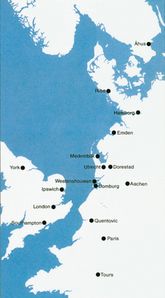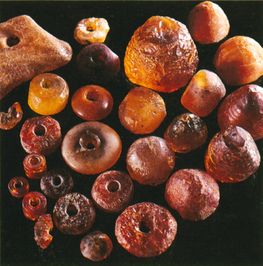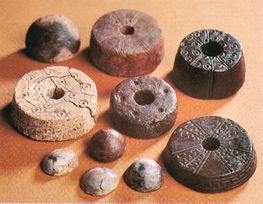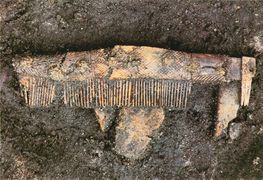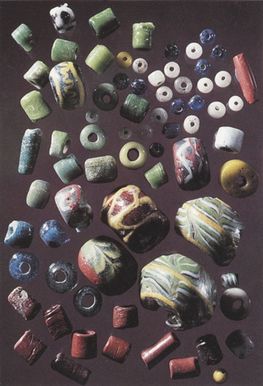Ribe
Ribe is the first Danish town to be named in written sources. Around AD 855 the town is mentioned in connection with the Danish King Horik II giving permission for the missionary Ansgar to build a church at the town. One hundred years later (in AD 948) Ribe became an Episcopal Residence and is therefore often mentioned in the written sources. Archaeological evidence shows that Ribe was an important trading centre between Western Europe and Scandinavia and that the town was fortified several times.
Faktum: Dendrochronological dating of a piece of oak wood from a well shows that Ribe was founded around AD 705.
In the beginning, the town was presumably just a seasonal market place during the summer months. The market place was carefully planned and not just a result of slowly expanding trade.
Who founded Ribe?
Two other large building projects from the same period, Kanhave Canal on Samsø (AD 726) and Danevirke (AD 737), speak in favour of the existence of a central royal power already at the beginning of the 8th century. It is reasonable to believe that Ribe was founded on the King’s orders.
During the whole period, the King's connection to Ribe is underlined by a series of finds of coins. Theese kings minted coins during the 11th century and use the name Ribe on their coins:
Strategically, Ribe has a fine location for the King to control the trade, both local and international. The town sold on imported goods from Western Europe to the rest of Scandinavia. This is evident from the innumerable finds of glass, pottery and quernstones, all produced abroad. Ribe was a town that, without doubt, was visited by many strangers, among these also people speaking another language, selling foreign goods, having different customs and of other religions.
The plots in Ribe were laid out according to a fixed pattern, as is also seen in other towns dating from the period AD 700-1100. The plots were rectangular with the house gables facing the street or the river so as to give easy access.
Ribe's fortification
In the beginning of the 9th century Ribe was enclosed within a 2-3 m wide ditch. This was hardly a fortification but rather a demarcation of the urban area, within which the town's rules and duties had to be observed. The market place was the King's responsibility and the merchants paid a duty as a quid pro quo. Later in the 9th century Ribe had a regular fortification when the town ditch was replaced by an 8 m wide moat with a rampart on the inner side.
In the 12th century Ribe had a new, massive fortification towards the east: A 12 m wide and 2 m deep moat with an 8 m wide rampart on the inner side. On top of the rampart there was apparently a palisade constructed of wooden posts. From the bottom of the moat the enemy had to force his way 7-9 m up to get over the rampart and into the town.
Christianity arrives in Ribe
Around AD 855 King Horik II gave permission to the missionary Ansgar to build a church in Ribe. He also allowed a priest to reside there. In AD 948 the first Bishop of Ribe is mentioned as participating in a Synod in Germany. His name, Leofdag, shows that he was not Danish and whether or not he actually ever sat foot in Ribe, no ones knows. Later written sources relate, however, that the Episcopal Residence in Ribe was very powerful and that by around AD 1000 it already controlled large areas of Jutland. In the second half of the 12th century the first stones were laid for the Cathedral, which still stands as Ribe's landmark.
By: Barbara Højlund


